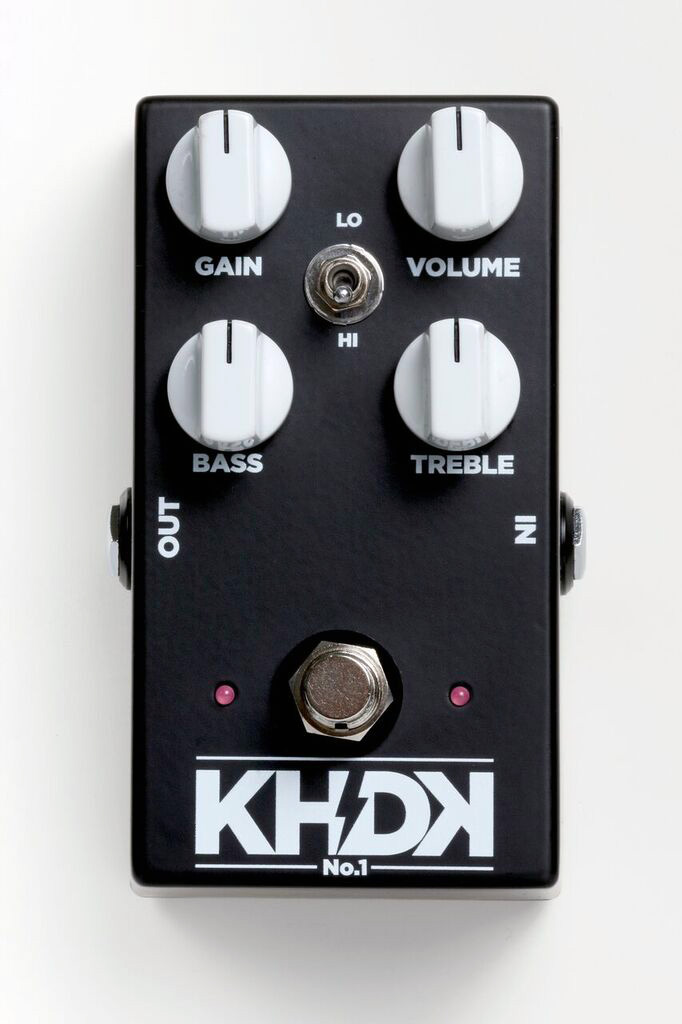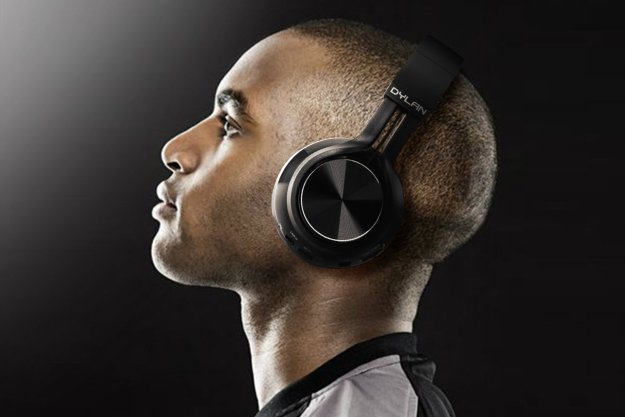
“When you find that perfect tone, it’s a great feeling to have.”
For many guitar players, finding the right tone is like striking gold or winning the lottery — or both. But finding it and nurturing it are quite different, so having the exact right guitar pedal(s) in the signal chain is a critical venture, to say the least.
Metallica’s lead guitarist Kirk Hammett is all about maximizing the diversity and unique character of his tone — just witness the range of jamtastic musculature he displayed on the rapid-fire pummeling of Master of Puppets (1986), the militaristic battle cries of One (1988), the iconic headbangery of Enter Sandman (1991), the defiant deliberation of 1991’s The Unforgiven (1991), the masterful sing-along cover of Thin Lizzy’s Whiskey in the Jar (1998), and the relentless riffological barrage of St. Anger (2003), to name but a few.
Hammett’s quest for the perfect tone ultimately led him to co-found KHDK Electronics with David Karon so that he could help create pedals that would reflect his sonic vision. Last fall, KHDK released the Ghoul Screamer to offer both clean boost and massive overdrive, and the newly issued No. 1 Overdrive pedal takes it all a step further. The guitar universe has happily embraced the Overdrive, which is currently in use in the rigs of players ranging from Rob Zombie’s John 5 to Volbeat’s Rob Caggiano to Disturbed’s Dan Donegan.
“It’s perfect for when you want to get a certain guitar sound or a certain kind of feel,” Hammett explains. “And when you find it, that’s a great feeling to have.”
While on his way to a Metallica recording session, Hammett got on the horn with Digital Trends to discuss the advantages of the No. 1 Overdrive, the wonders of vinyl, and what we might expect to hear next from Metallica. We’re off to never-tone-deprived land.
Digital Trends: Tell me the philosophy behind your design goals for the No. 1 Overdrive pedal.
Kirk Hammett: It’s the perfect pedal for going from clean to dirty really, really quickly. A lot of times when you buy a pedal to do that, it usually just magnifies or augments the tone you already have. With this pedal, you’ll be able to dial in the heavy sound you want to come in on. It’s great, you know? It’s not just a boost, but an overdrive too. It’s a really simple circuit, but at the same time, it’s very sophisticated in its design.
With vinyl, you can hear the instruments the way they were meant to be heard.
You can use it as a micro amp, but you can also use it as a distortion pedal. You can get both the boost and the tone you want with it; it’s pretty cool in that regard. I should stress that when you’re using the actual pedal, the bass knob doubles as another distortion knob, or gain stage. It’s versatile, and it can do more than it looks like it can do. It’s capable of getting that hard/soft and quiet/loud dynamic that was popular way back when.
Also, if you have your lead tones dialed in and if you want it to cut through more when you’re playing with your band, it’s the perfect pedal for that, too.
Has it changed the feel of or the way you play now?
As far as it actually changing my playing, it just brings me a few more options when I’m improvising to maybe get a different kind of feel or set a certain sort of mood.
Is there a Metallica song that you feel this pedal is going to work great on the next time you hit the road with it?
Typically, I would use this on a ballady kind of thing — probably a song like The Day That Never Comes, from [2008’s] Death Magnetic, which is a ballad that has heavy choruses. This pedal is perfect for that sort of thing.
Having said that, when I’m doing small gigs that are not Metallica-related — like when I’m doing a club show with some band, or just jamming with people — you take the Ghoul Screamer, the No. 1, and a wah pedal and turn them all on at the same time, and it’s fucking beautiful. It’s incredible. You’re fucking set! It’s everything you ever wanted and more. That combination right there is killer. It totally goes for the throat.
I love hearing that. You’re a big fan of vinyl, right?
I love vinyl — always have, always will.
What is it about vinyl that’s cool to you?
It’s a sound that’s nice and warm. It’s easy to listen to. The whole spectrum of vinyl is a lot smoother and easier to listen to on the higher frequencies. On the lower end, it’s warm — more of a caress than a thump.
To me, you can really hear the instruments the way they’re meant to be heard without any harshness that may have been put on in post-production. A lot of times things are mastered digitally without anything analog involved, and that can create a really harsh sound, especially in the upper frequencies and the upper mids. Vinyl and analog recordings just sound better.
Do you have a favorite vinyl record that’s the best-sounding one to your ear?
I can always tell the difference between MP3s and CDs.
Oh, bro — there’s all sorts of ’em! (both laugh) I love listening to the old blues records. The way that stuff was recorded, you had to get the best sound you possibly could at that moment, and then you just plugged in and did it.
It’s an honest kind of sound.
Very honest! I love listening to old Muddy Waters records, Howlin’ Wolf, Freddie King, Albert King, BB King. And I particularly like listening to the old jazz stuff from the ’50s. All of that stuff was recorded so, so well. It had the right amount of breakup so it didn’t sound too clean. It had a “woody” sound. That’s what I call it. It had a “woodsy” sound to me.
It sounds like you’re right in the room with the Wolf and the rocking chair.
Yeah, it did! Absolutely, and I love it. How can you not love it?
As a musician and a guitar player, I love listening to some of the old Stevie Ray Vaughan records. His guitar sound was so incredible, and on vinyl, it’s just that much more incredible.
On the other end of that spectrum, we have high-resolution digital files. Is that something you think about now when you’re recording?
There is definitely a way now to record digitally that totally sounds good and makes sense, but for me, I’m really old school. When I go into the studio, I want to plug into guitar amps with tubes. I want to hear tubes. I don’t want to hear solid-state circuitry. Solid state is OK if it’s used in conjunction with tubes, but bro, I’m really old school when it comes to that sort of stuff. I want to hear what it sounds like when I’m just playing in a room. I want that sound.
I was going to say it’s like capturing Whiskey in a Jar, but somebody already used that title.
Yeah, exactly! (chuckles)
Do you listen to any music with streaming services like Spotify?
Like I said, I’m old school. I’m still spinning records and CDs. I just found my old cassette Walkman that I used to carry around with me religiously in the ’80s and ’90s and into the 2000s. That was what I used to use to record on the fly. I found that recently and I thought, “Well, if I continue using this, I wouldn’t have to worry about losing my phone and losing 500 riffs.” That did happen to me.
A surround-sound mix is fantastic when you have something that’s recorded really, really well.
When it comes to Spotify, I think it’s pretty cool. I have the app, and I can go to Heavy Metal and listen to whatever metal I want and have a somewhat good-sounding stream of it.
But I tend not to stream or listen to digital MP3s as much as what I usually do — which is listen to CDs, mix CDs, mix tapes, or albums. It’s convenient, but at the end of the day, MP3s don’t sound that great to me. I can always tell the difference between MP3s and CDs.
I’m totally with you on that. There’s so much information missing from MP3s, especially in the dynamic range. What’s wrong with MP3s to your ears?
On the tonal spectrum, the low end isn’t the low end. 30k does not sound like 30k; it sounds like something else. In other words, it doesn’t follow the traditional tonal spectrum analysis. It’s thinner, it’s not as clean-sounding; it sounds dead. There’s not enough of the frequency coming through.
It seems gummed up, like you need a windshield wiper to clear it away.
It seems like there’s, I don’t know… some sort of petroleum jelly over the sound. (both laugh)
Yes — it’s like you need some sort of audio Q-tip to clear your ears out to get anything.
Absolutely! That’s probably the best way to describe it. You’re not getting the traditional characterizations of tone. If you have an extensive stereo setup and you play MP3s through it, you’re not getting the whole thing.
So true. You wind up cheating yourself. One way I don’t cheat myself is when I listen to surround-sound mixes.
A surround-sound mix is fantastic when you have something that’s recorded really, really well.
Speaking of that, you guys put out a great surround-sound mix of [1991’s] The Black Album in 2001, back in the days of DVD-Audio. The 5.1 mix of Nothing Else Matters by Bob Rock and Randy Staub puts you right in the middle of it all. It’s pretty powerful.
Yeah, yeah. I agree.
Would you revisit that idea for any of the new material Metallica is working on now?
You know, there’s always that option. But the situation winds up as, “Do we pull the trigger on this, or is there something just right around the corner that we should wait for?” That’s kind of a mantra for us these days.
Is there anything you can tell us about what you’re working on in the studio today?
Well, we’re definitely in the middle of something. I’m on the way to the studio right now to record more guitar parts. When I get there, I’m actually going to change my guitar sound, because over the weekend, I didn’t feel it was good enough. We’re always trying to make the best-sounding album that we can.
Other than that, everyone else is going to have to wait. I mean, I have to wait to find it all out too. (laughs) So there you go.









